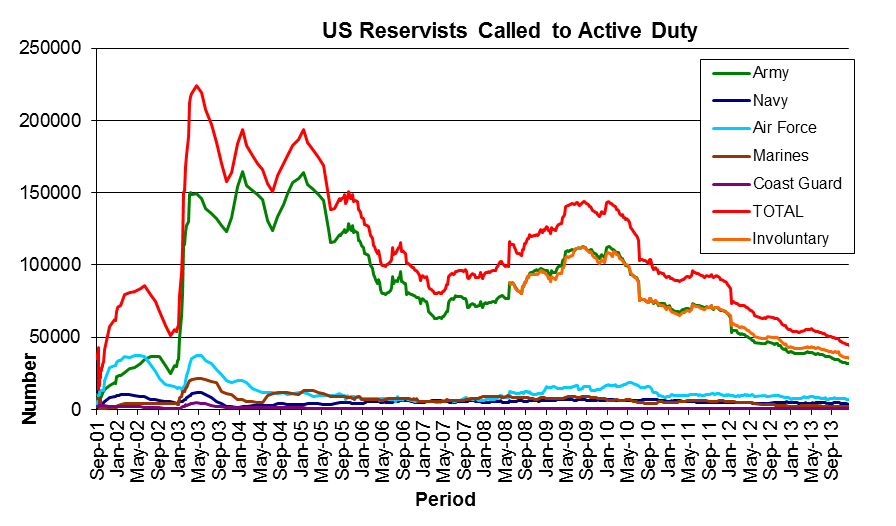With another Defence white paper in the offing, opinions abound on what that document should prescribe for the ADF’s force structure. As always, the challenge is setting a structure that meets Australia’s defence needs without exceeding its budget.
Even if it’s never used, force structure has two pricey elements: personnel and their equipment. Nowadays, personnel tends to be the more expensive component in Western militaries (about 42% in Australia). With this in mind, and as Nic Stuart forecast for the last white paper, one of the options that the new document should again consider is the ADF’s mix of Regular and Reserve units. The traditional premise for this consideration is that Reserve forces are cheaper than Regular ones when they’re not being used.
In most militaries, regular–reserve mix is a fraught issue, influenced by ‘empirical’ questions of cost, quality and readiness, to say nothing of vexed aspects like professional credentialism, local interests and politics. Accurately gauging even the empirical pieces is complicated by rubbery metrics. But the last 12 years provide a powerful case study of the employment of Reserve forces in major conflicts that could be useful to the white paper deliberations.
Take the case of the largest Coalition player in both Afghanistan and Iraq: the United States. The graph below shows the number of US National Guard and Reserve personnel (the two categories of US military ‘part timers’—with apologies to Guardsmen, I’ll call them all Reservists henceforth) that have been ‘activated’ to fight those conflicts since 9/11. Scratching below the surface reveals some interesting insights.

Source: Defenselink
First, Reservists have given the US enormous flexibility in the size of its active military payroll, enabling it to massively scale up and down in response to force demands from theatre over a prolonged period. Second, most of the Reserve burden has fallen on land forces (Army, Army National Guard and, in these conflicts, Marines), although all services have shown the same proportionate responsiveness.
Not shown is that the Reserve component of the all-volunteer force has come through this twelve-year ordeal in good shape. Contrary to popular myth, the force isn’t exhausted: all services have continued to recruit up to or near their targets—a key indicator of Reserve force health. Several services have exceeded their targets consistently. The economy may have helped recruiting and retention in recent years, but the picture suggests that US policy options for the use of military force since 2001 haven’t been constrained by the fact that much of that force is part time. Add to this the vast experience gained by Reservists and the outlook for the part-time force is good.
These all sound like strong arguments for a hefty slice of Reserves in the force mix, at least for land forces. But there’s more to the figures than meets the eye, especially when applying this experience to Australia’s circumstances.
First, the US gets the Reservists it pays for. Their service attracts significant benefits not available to Australian Reservists. This may help to explain the extraordinary loyalty US Reservists have demonstrated over the last 12 hard years. But they’re also much more expensive than ours. To realise similar capability, as Katherine Ziesing and Jim Molan have inferred, Australia would need to lift its investment massively. And the US may find that recruiting and retention decline if it windss back benefits in response to fiscal constraint as it’s considering..
Second, the US can exploit economies of scale that Australia simply cannot. The US Army, even after currently planned shrinkage will have over 400,000 Regular personnel (in addition to its Reservists and National Guardsmen) and commensurately robust high-readiness capabilities, deep logistics capacity and training base. It’ll also have a strong source of ex-Regulars with powerful incentives to commit to Reserve service. Given its relatively tiny Regular force structure, there are few new tradeoffs available to the ADF without major risk, especially in high-readiness land forces.
Finally, the US enjoys high utility from its Reserve forces because it actually uses them. This has recruiting and retention benefits of its own. And over 70% of its part-timers who’ve served since 9/11 were activated involuntarily—the equivalent of ‘calling out’ Australia’s Reserves. As Hugh Smith has pointed out, Australian governments are pathologically averse to call out, meaning that even a capable Reserve would likely be underutilised.
Ultimately, optimum use of ADF Reserves will demand smart decisions based on robust analysis and backed by institutional commitment and resources over a prolonged period—things we’ve done badly since 1939. The US experience shows one way things can be done differently, albeit more expensively. The UK’s and Canada’s, while different, are equally worthy of study for what they can teach Australia. The recency of this experience gives this white paper a real opportunity to get the balance right.
Andrew Smith is an independent researcher based in the United States.